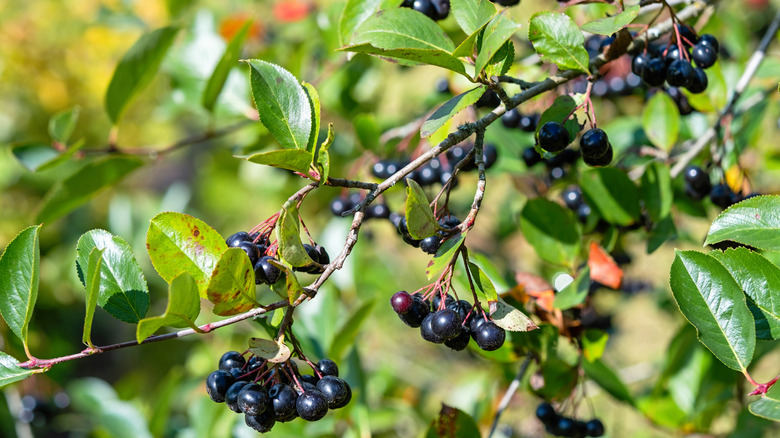It's Not Too Late - Plant This Fruit Bush In November For Delicious Berries In Summer
The garden calendar might seem like it's done for the year, but the chill of late fall actually signals the perfect opportunity for gorgeous shrubs to plant in November. For fruit-loving gardeners, planting the chokeberry bush (Aronia spp) right now gives it a huge advantage over doing so in spring. This late-autumn timing gives the bush plenty of time to focus all its energy on root establishment throughout this otherwise dormant period. By the time spring arrives again, your chokeberry is securely anchored. Then it can switch its focus to growing healthy foliage and (most importantly) producing fruit faster.
Beyond producing food for you and your family, the chokeberry is a true powerhouse of four-season beauty. It offers delicate clusters of white flowers in the spring, glossy dark green foliage during the summer, and a spectacular fiery display for autumn, with bright crimson leaves. The chokeberry bush is also a good ground cover to add striking color.
The star feature, however, is the fruit itself. These berries, whether you opt for black (Aronia melanocarpa) or red (Aronia arbutifolia), are delightfully tart, making them good for everything from jams to juice. Chokeberries are even celebrated as a superfood, with high antioxidant content. There's nothing not to like about chokeberries, so let's learn how to plant them.
How to successfully plant chokeberry in November
Taking advantage of the November planting window is great for perennials you can plant now, and chokeberry alike. It only requires you to follow a few steps to set up your chokeberry for winter survival and springtime thriving. Chokeberries are super resilient and versatile, and happily tolerate conditions from full sun to partial shade in USDA hardiness zones three through eight. When getting ready to plant, dig a hole twice the size of the root ball so it has room to spread. Position the root ball to be level with or just above the surrounding soil to stop water from pooling at the crown.
Once it's planted, give it a deep first watering to help it settle into the soil. What will set it up for a successful winter establishment is adding a generous layer of mulch with compost around its base. Do about two to three inches of material, like shredded leaves or wood chips. That will insulate the bush from deep cold stress and retain moisture. Be sure to keep the mulch a few inches away from the main stem so there's no moisture buildup.
One of the best things about chokeberry is how low-maintenance it is. All you need to do during winter is to keep it moist until the ground freezes solid. Once that hard freeze sets in, you don't need to bother with watering until spring. It won't even need much, if any, fertilizer in the first couple of years. After you plant your chokeberry, all you need to do is kick back, enjoy the fall foliage, and start getting excited about eating your first handful of these delicious berries next summer.

